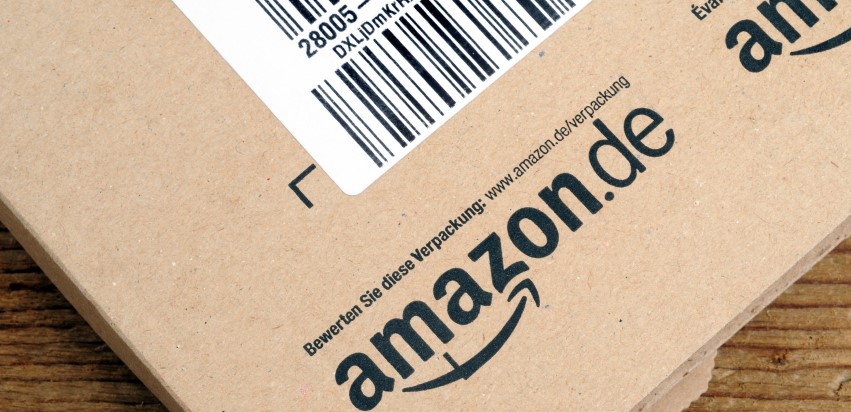Running a successful business on Amazon isn’t easy. Ask anyone who’s tried. The magic formula for finding a suitable product with willing buyers and a healthy margin eludes many sellers. Most people spend a lot of time and money trying to get it right. Even then, success still isn’t guaranteed.
Take the example of a UK Amazon seller I recently read about in the Guardian. After losing his job, he decided to try selling online in spite of the advice of friends who said he was crazy.
Needless to say, he began disastrously; selling Star Wars masks sourced from a local art shop that nobody wanted. Fast track six years and he now runs an online electronics business with an annual turnover of £3m.
He admitted that without Amazon his success would not be possible. Amazon gave his entrepreneurial passions an outlet. Even so, he still views Amazon as ‘a necessary evil.’
His Amazon bugbears? Ever-increasing fees, the ‘attitude’ towards sellers and strict rules. The crux of his argument was that sellers are virtually powerless and Amazon can act as they please.
And that’s where seller rules come in.
The Rules of the Jungle
Amazon is the world’s biggest online marketplace. Chief among the reasons is that it safeguards the customer experience by encouraging sellers to provide quality service. This makes sense, as it strives to be “earth’s most customer-centric company”. So is it fair to describe Amazon’s selling rules as unduly strict?
There are more than two million third party sellers on Amazon who bring a variety of goods to its ever-growing catalogue. Its success is partially attributed to third party sellers. Yet quality control is a vital component in maintaining the planet’s biggest marketplace.
Would it be right for Amazon to support sellers who can’t do the basics, like timely shipping and good customer service?
Are sellers in control if they are not on multiple channels?
Amazon has a habit of moving the goalposts at short notice, without seeking any kind of approval or opinion from sellers.
As an Amazon seller, it can be an unsettling thing to wake up every morning not knowing if your business will work the way it did yesterday, or if there will be more Amazon hoops to jump through to keep the show on the road.
Remember when Amazon asked sellers to respond to customers within 12 hours over Christmas? Or when it gave FBA sellers hours to avoid long-term storage fees?
Amazon isn’t always great at communicating decisions and explaining their logic. But greater transparency might not benefit the marketplace. For example, how the Buy Box is awarded and how seller rating is calculated could leave the system open to abuse.
If you do things properly you shouldn’t be scuppered by sellers who take shortcuts. Sellers who perform well and generate positive feedback are more competitive and sell more. You’re well rewarded for playing by the rules.
Amazon gets accused of making sellers feel like they’re privileged to trade there, instead of thanking them for the income they generate. If everyone wins; the customer, the seller and Amazon, the rules must be working, right?
Seller Gripes or Sour Grapes?
Common Amazon seller headaches include a lack of control over:
- refunds and chargebacks,
- negative reviews without genuine cause,
- unjustified A-to-Z Guarantee claims leading to unjustified penalties,
- prices; due to rules that forbid sellers from offering better prices outside of Amazon.
Related blog: Why would Amazon suspend my account and what should I do?
Some of these concerns are justified but even the most ardent critic must realize that Amazon do what they do to keep buyers coming back, time after time. So far it’s been pretty successful. There are occasions where the rules seem tough, but what’s the alternative?
There’s isn’t one if you plan on selling on Amazon. Once you choose Amazon, they make the rules and you play the game.
However you can protect yourself from relying too heavily on the Bezos behemoth by selling on multiple marketplaces.
Going Multi channel
Even if Amazon is your primary source of income, selling on multiple channels has gotten much easier thanks to the availability of eCommerce help desk software that streamlines the process. Thinking beyond the Amazon horizon? Here are your options:
- Sell on your own web store – the best way to build a strong brand,
- Identify multiple marketplaces where your products would sell well,
- Set up your additional channels and start selling.
Depending on where you’re located, you could have plenty of options.
Amazon alternatives include eBay, Alibaba, Rakuten, Newegg, Jet, Sears, Bonanza, Etsy, FlipKart, Walmart, SnapDeal, daWanda, NotontheHighStreet and more. It’s worth mentioning that not all of these marketplaces are available internationally.
You can build your own web store easily with platforms like Shopify integrations with xSellco, Magento, WooCommerce, BigCommerce, PrestaShop and more.
Amazon make the rules for good reason – they’ve earned the right to control marketplace conditions for sellers because they provide a steady stream of buyers. No one is forced to sell on Amazon; we sell there because of the advantages Amazon offer.
Sellers pay premium fees for a premium marketplace with rules that favour the customer. If you don’t like it, you’re free to sell elsewhere. Fair deal?
Try xSellco Fusion on a Free 14-Day Trial








